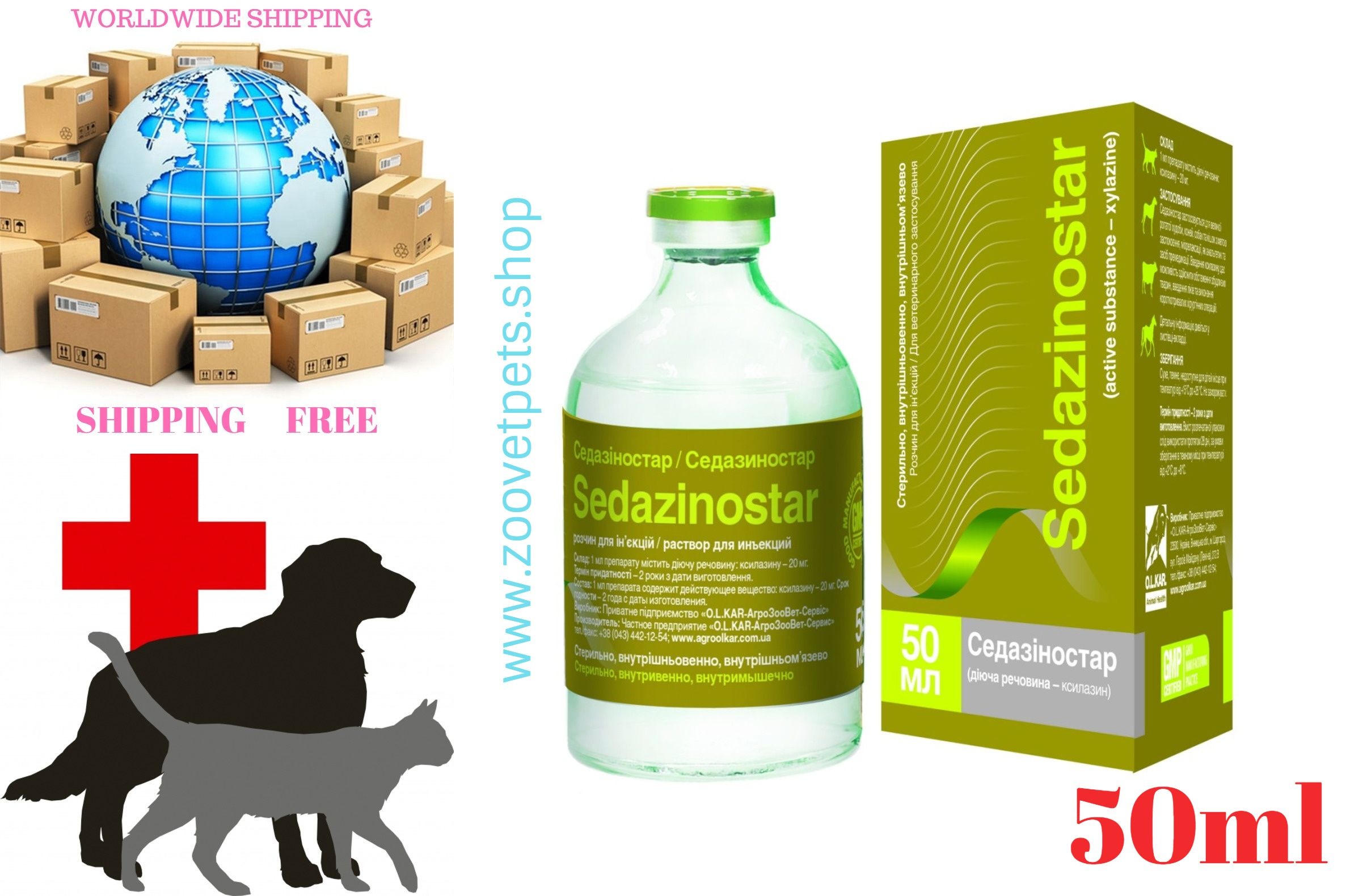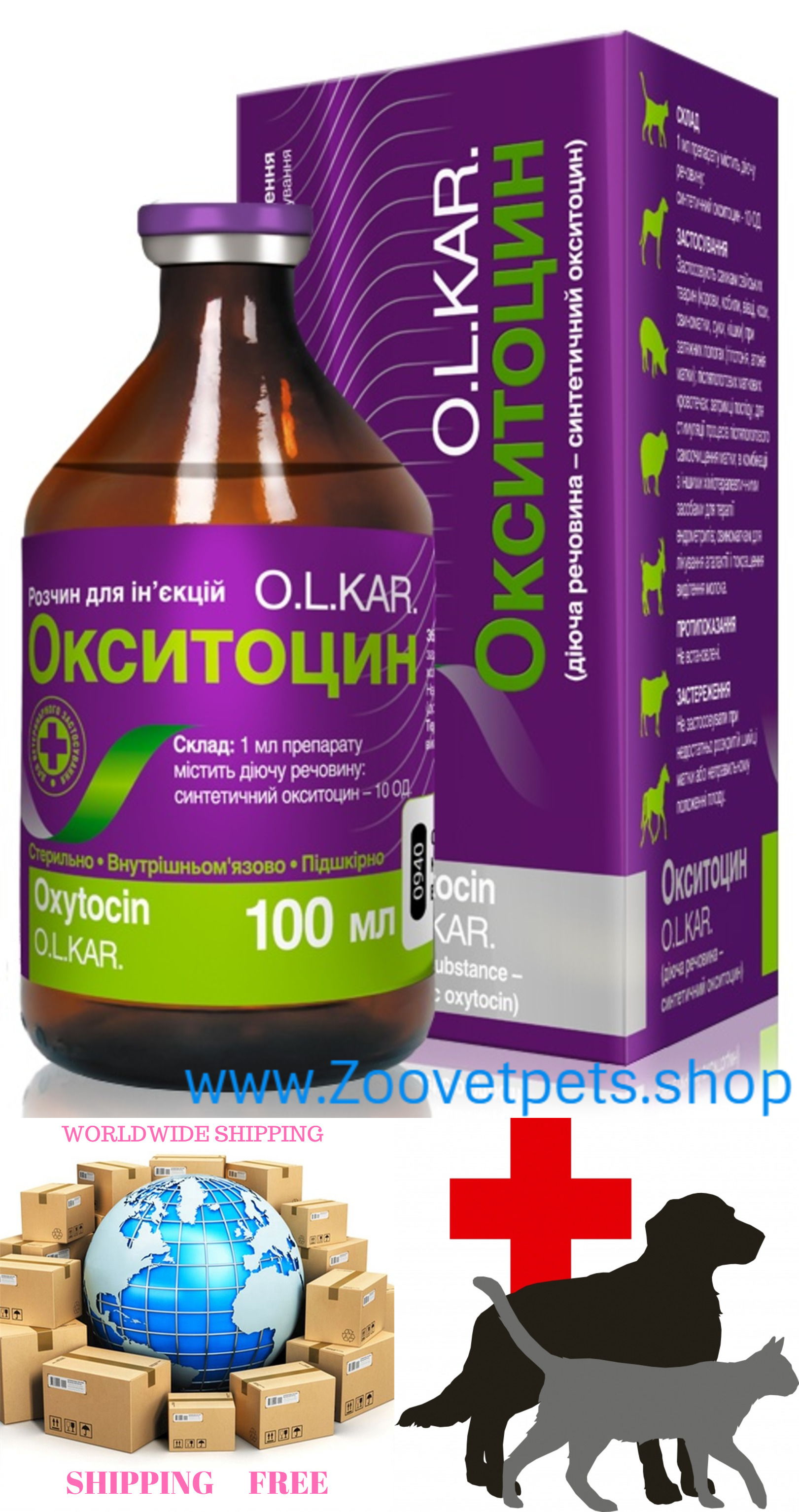Description
Description:
Transparent colorless solution.
Composition:
1 ml of the preparation contains
active ingredients:
Xylazine hydrochloride – 20mg.
Pharmacological properties:
Xylazine is a derivative of thiazine. Its calming and analgesic effect is the effect of stimulation of alpha2-adrenergic receptors of the central nervous system. Relaxation of skeletal muscles is a consequence of blocking the interneuronal transmission of excitation in the spinal cord.
The action of xylazine after administration starts within 5-10 minutes, after intravenous – within 3-5 minutes. Analgesic effect is maintained for 10-15 minutes, and soothing – for 0.5-4 hours, depending on the type of animal. The drug works longer after intramuscular administration.
Application:
Sedazinostar is used for cattle, horses, dogs and cats to calm, muscle relaxation, as analgesic and premedication. Xylasein administration allows for examination of excitable animals, administration of medication and short-term surgical procedures.
Dosage:
Cattle (intramuscular):
0.025 ml of the preparation per 22lb (10 kg) body weight – causes insignificant sedative effect, causes slight muscle relaxation and moderate analgesia;
0.05 ml per 22lb (10 kg) body weight – causes moderate sedation, muscle relaxation and analgesia sufficient for minor operations;
0.1 ml of the preparation per 22lb (10 kg) body weight – a strong manifestation of all the effects, used in combination with local or conductive anesthesia in complex surgical interventions.
If intravenous administration of the drug is necessary, the dose is reduced by 50%.
Horses: 0.4 ml per 22lb (10 kg) body weight (intravenously) and 1 ml per 22lb (10 kg) body weight (intramuscularly).
Dogs (intramuscular, subcutaneous): 0.15 ml / 2.2 lb (1kg) of body weight.
Cats (subcutaneous, intramuscular): in dose 0.15 ml per 2.2 lb (1 kg) of body weight.
To prevent cardiac activity, the drug should be administered together with atropine.
In case of intravenous administration, the drug should be heated to body temperature and administered slowly.
Contraindications:
Do not use in ventricular arrhythmia and shock.
Do not use in diseases of the respiratory system.
Do not use in late pregnancy (risk of miscarriage), except for childbirth.
Do not use in diabetes mellitus (xylazine reduces insulin levels).
Do not use in conditions of obstruction of the esophagus in dogs and cats.
Apply very carefully in case of convulsions, acute kidney or liver failure.
Caution
Horses:
Xylazine makes normal intestinal peristalsis difficult, so it should only be used in horses with colic that cannot be treated with analgesics; it should be avoided in horses with weakened intestinal motility,
Use with caution in horses sensitive to acute diffuse inflammation of the base of the hoof skin,
Animals with symptoms of respiratory failure or respiratory disease may experience life-threatening asphyxiation,
the smallest of the recommended doses should be used.
Cats and dogs:
Xylazine blocks normal intestinal peristalsis, so it should not be used in front of the stomach and initial bowel X-rays, as the gases that accumulate do not allow for a correct interpretation of the test results,
Dogs of brachycephalous breeds with symptoms of respiratory failure or respiratory disease may suffer from life-threatening asphyxiation.
Cattle:
Xylazine slows down pre-stomach motility, which can cause meteorism, so it is recommended not to feed or drink animals a few hours before administration,
After xylazine administration, the reflexes of ructation, coughing and swallowing are weakened, so animals should remain in the thoracic position during their return to consciousness, and they should be closely monitored,
It is recommended that low and medium doses be given to cattle.
The dosage should take into account the individual vulnerability of the animals.
To avoid overdose, the correct dose should be determined by determining the animal’s body weight in as much detail as possible.
In case of accidental administration of the drug, you should consult your doctor and show the doctor the information leaflet or the packaging.
Medicines that have a neurodepressant effect on nerve centers (anesthetics, analgesics) increase the effect of xylazine. This causes an increase in cardiodepressive action, weakening of respiratory functions and hypotensive action. Therefore, great care should be taken when combining xylasine with opioids.
Xylazine and thiobarbiturates or halotanes should not be administered together because this causes increased heart rhythm disturbance.
In view of the danger of irregular ventricular activity, xylazine should not be injected together with adrenaline and other drugs that excite a good-looking system, or immediately after their introduction.
Do not use in late pregnancy due to the risk of miscarriage.
Storage:
Dry dark, inaccessible to children place at temperatures from 59-77F (+ 15 ° to + 25 ° C). Do not freeze.
Shelf life – 2 years.
The contents of the printed package should be used for 28 days, provided that it is stored in a dark place at temperatures ranging from 35-45F (+ 2 ° C to + 8 ° C).









Reviews
There are no reviews yet.